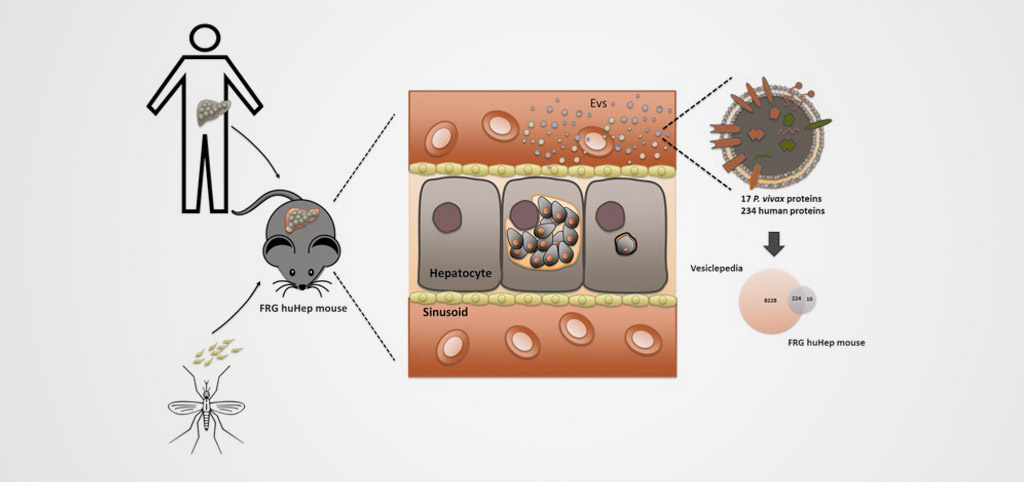In search of biomarkers to detect patients with latent Plasmodium vivax infections

- A study reveals the presence of proteins from hypnozoites, the latent phase of the parasite, in circulating extracellular vesicles
Proteins derived from the latent liver stage of Plasmodium vivax can be detected in small extracellular vesicles that circulate in blood, according to a study led by Hernando del Portillo, ICREA Research Professor at the IGTP and ISGlobal. The results pave the way for identifying patients with asymptomatic infections, an essential requirement to stop parasite transmission.
P. vivax is the predominant malaria parasite outside Africa and causes around 16 million cases per year. Although considered less lethal than malaria falciparum, malaria vivax can also cause severe disease and is associated with considerable morbidity and mortality in endemic regions. In addition, P. vivax constitutes one of the greatest obstacles to achieving WHO's target of eliminating malaria from 35 countries by 2030. This is because the parasite can remain latent in the liver during several years after the initial infection, without causing any symptoms. Reactivation of the latent phase (called hypnozoite) causes disease relapse and allows for the possibility of transmitting the parasite to other people. Currently, there are no diagnostic tools capable of detecting asymptomatic hypnozoite carriers.
In this study, the research team led by Hernando A del Portillo (ICREA) and Carmen Fernandez-Becerra, researchers at ISGlobal and the Germans Trias i Pujol Research Institute (IGTP), explored the possibility of using blood circulating exosomes (small vesicles secreted by different cells) to detect the presence of hypnozoites in the liver. For this, they used a new experimental model developed by their collaborators at the Center for Infectious Disease Research (CIDR) in Seattle'humanised' mice that contain human liver cells and can therefore be infected by P. vivax. From the blood of these mice, Melisa Gualdrón-López, PERIS Fellow at the IGTP, managed to isolate human-derived exosomes that contained up to 17 different hypnozoite proteins, including a previously uncharacterized protein.

"These results are a proof-of-concept that liver-derived exosomes can help us identify biomarkers of hypnozoite infection and hopefully develop diagnostic tests for these asymptomatic patients," says del Portillo. “What is more, this experimental model will provide valuable insights into the liver infection phase.”
Thanks to this work, the group have secured further funding from an NIHR21 Project from the National Institute of Health. This will ensure the very important next stage, Portillo tells us. Now we can use the technique at point of care on samples from asymptomatic patients and evaluate it as a tool for diagnosing malaria in this dormant stage.
Reference:
Gualdrón-López M, Flannery EL, Kangwanrangsan N, et al. Characterization of Plasmodium vivax proteins in plasma-derived exoosmes from malaria-infected liver chimeric humanized mice. Frontiers in Microbiology. 25 June 2018 doi: 10.3389/fmicb.2018.01271
Funding Information: Melisa Gualdrón-López is a postdoctoral fellow supported by the Plan Estratégico de Investigación e Innovación en Salud (PERIS) of the Generalitat de Catalunya. Work in the laboratory of Carmen Fernández Becerra and Hernando A. del Portillo is funded by the Ministerio Español de Economía y Competitividad (SAF2016-80655-R) and by the Network of Excellency in Research and Innovation on Exosomes (REDiEX) (SAF2015-71231-REDT) and by Fundación Ramón Areces 2014 Investigacón en Ciencias de la Vida y de la Materia (Project Exosomas: Nuevos comunicadores intercelulares y su aplicabilidad como agentes terapéuticos en enfermedades parasitarias desatendidas).
